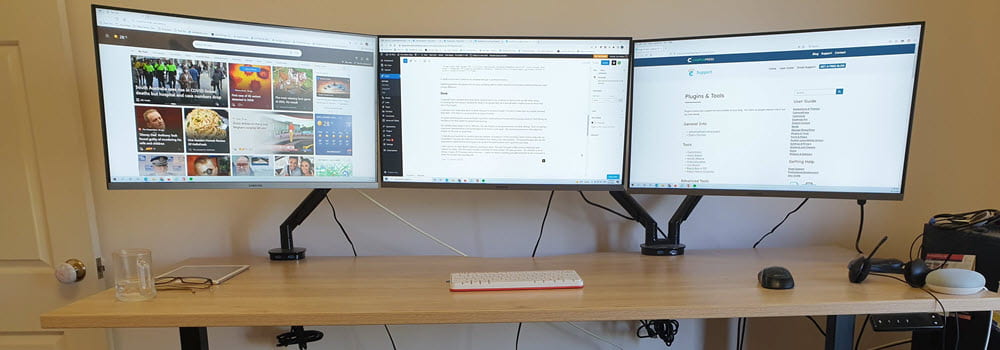 My Tools of the Trade post has been fairly popular (Web 2.0 tools that I recommend for lecturers and why) so I thought I would follow it up with Tips of the Trade (i.e. basic strategies I use to empower lecturers with some Tools of the Trade). Also worth checking out My EveryDay tools (software and online tools I use everyday). (Photo by K.Lewis)
My Tools of the Trade post has been fairly popular (Web 2.0 tools that I recommend for lecturers and why) so I thought I would follow it up with Tips of the Trade (i.e. basic strategies I use to empower lecturers with some Tools of the Trade). Also worth checking out My EveryDay tools (software and online tools I use everyday). (Photo by K.Lewis)
Let me first start with a disclaimer – contrary to popular belief by some I am “Newbie” at facilitating e-learning professional development (although working part time as a PD facilitator (0.5) and lecturer (0.5) helps me relate better to the lecturers involved in my programs).
My Tips
1. DON”T start with showing me HOW – show me WHY first!!
I can not tell you the number of PD workshops where the facilitator has spent the whole time showing me “how to” and totally forgotten that I am not even going to bother learning “how to” until you give me the reason WHY I would even bother. For this rule and guess what “I NOT LISTENING”.
“Why should I use the technology, how could I use the technology with students, what are the benefits for me and my students”
This to me should always be the starting point for all workshops with lecturers.
2.Structure the workshops so that it increases their ICT skills plus empowers them with skills that will enhance their work life
One of the biggest challenges I come across with most of my participants is they are normally at the beginning of their online journey (i.e. most are consumers of information from the Internet) and in many cases have limited ICT skills. Target the workshops at their skills level, don’t overwhelm them with skills way above their capability and if necessary reduce the number of skills they need to learn to suit their needs (my post on We all need a helping hand, sometimes explains how I structure the PD sessions).
I also like to focus on giving them highly transferable skills that they can use in various aspects of their work. For example, teaching them how to create Instructional Videos and PowerPoints for PDAs also gives them increased ability to use PowerPoint and create movies with MovieMaker that they can use in their classes, on PDA, online or podcast.
3. Assist in their journey from online consumers to participants
“How can we hope for them to use the Tools of the Trade effectively with their students if they are not at the point of feeling comfortable participating online”
Read my post on Expectations of Collaboration and Participation in online environments to learn more about how people progress in their online participation journey.
Incorporate some form of online activity that makes them have to participate online. Does not matter what I am facilitating (e.g. how to use PDAs) I get them to record their thoughts online at the end of the session. I currently use a wiki for this purpose only because I like to use Stealth Mode (introduce tools into the workshop that are not a required part of the professional development but will trigger them to think about how they could use it with their students) – here is an example of one of my wikis I use .
I use wikis because I know from experience staff quickly get excited by the potential of wikis (for example several staff from the Visage Training Centre who are learning how to use PDAs now want to set up wikis for their students). However I really love the way Ames West Coast Learnscope blog and Darren Draper with Teaching With Tech – EDT 612 blog are using their blogs to get their participants to reflect on their learning.
Another tool that I have used by Stealth is Survey Monkey (for Skills Audit) – which once again someone has gone away and is now using (even though the workshop was on PDAs).
The key when you are in Stealth Mode is not to overwhelm them with too much.
4. Structure the program so the participants move from dependence to independence
Words of wisdom supplied by Becky Saunders (Instructional Intelligence)
“Do you give a person one lesson drivng a car then expect them to be able to drive a car? We all know this is totally unrealistic, when people learn to drive a car they move from totally dependence on the instructor to independence and this takes time – how long depends on the individual. Yet we expect participants to learn and use technology (which requires in many ways requires more skills than learning to drive a car) after just a couple of lessons”.
Read about how Philip facilitates professional development to learn more about moving participants from dependence to independence.
Welcome to blogging
On a final note my mate – James (Sir Jimbo) has entered into the blogging world with his Probable Distractions blog. I am already seriously concerned by the purposed content of his blog as a result of his first post Growing a Bountiful wiki – his recommendation on which site to go to learn about wikis was chosen on the basis of if they referenced to the Muppets (very concerning to me that he is considerably younger than myself and into the Muppets – honestly I lived through the Muppets – please James you need intervention) . Note he finishes his post with “Rampant online technologist Sue Waters has also thrown her hat into the ring with her own Wiki tute site. No Muppets references, but you can’t have everything…” Although I do like the name “Rampant online technologist”
Can you please visit James’s blog to educate him on what’s cool and what’s not?




Leave a comment